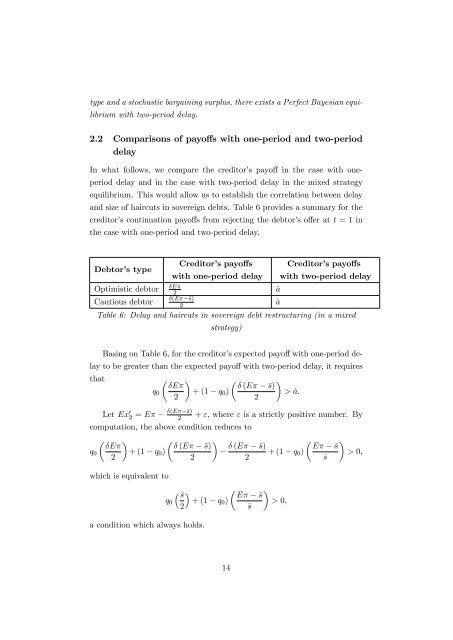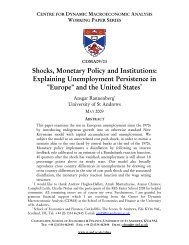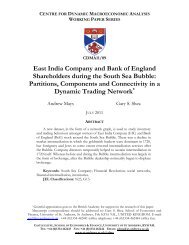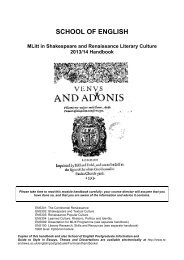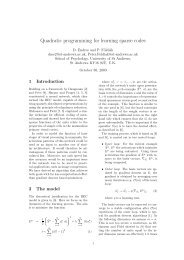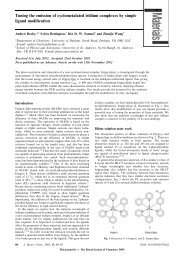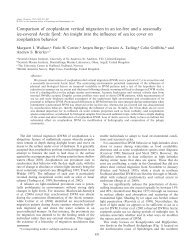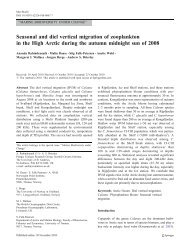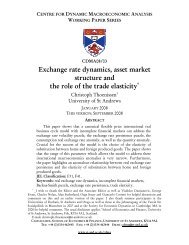Delay and Haircuts in Sovereign Debt - University of St Andrews
Delay and Haircuts in Sovereign Debt - University of St Andrews
Delay and Haircuts in Sovereign Debt - University of St Andrews
Create successful ePaper yourself
Turn your PDF publications into a flip-book with our unique Google optimized e-Paper software.
type <strong>and</strong> a stochastic barga<strong>in</strong><strong>in</strong>g surplus, there exists a Perfect Bayesian equilibrium<br />
with two-period delay.<br />
2.2 Comparisons <strong>of</strong> payo¤s with one-period <strong>and</strong> two-period<br />
delay<br />
In what follows, we compare the creditor’s payo¤ <strong>in</strong> the case with oneperiod<br />
delay <strong>and</strong> <strong>in</strong> the case with two-period delay <strong>in</strong> the mixed strategy<br />
equilibrium. This would allow us to establish the correlation between delay<br />
<strong>and</strong> size <strong>of</strong> haircuts <strong>in</strong> sovereign debts. Table 6 provides a summary for the<br />
creditor’s cont<strong>in</strong>uation payo¤s from reject<strong>in</strong>g the debtor’s o¤er at t = 1 <strong>in</strong><br />
the case with one-period <strong>and</strong> two-period delay.<br />
<strong>Debt</strong>or’s type<br />
Creditor’s payo¤s<br />
with one-period delay<br />
E<br />
Creditor’s payo¤s<br />
with two-period delay<br />
Optimistic debtor<br />
2<br />
^a<br />
(E s)<br />
Cautious debtor<br />
2<br />
^a<br />
Table 6: <strong>Delay</strong> <strong>and</strong> haircuts <strong>in</strong> sovereign debt restructur<strong>in</strong>g (<strong>in</strong> a mixed<br />
strategy)<br />
Bas<strong>in</strong>g on Table 6, for the creditor’s expected payo¤ with one-period delay<br />
to be greater than the expected payo¤ with two-period delay, it requires<br />
that<br />
E<br />
(E<br />
q 0 + (1 q 0 )<br />
2<br />
2<br />
s)<br />
> ^a:<br />
Let Ex 0 2 = E (E s)<br />
2<br />
+ ", where " is a strictly positive number. By<br />
computation, the above condition reduces to<br />
E<br />
(E<br />
q 0 + (1 q 0 )<br />
2<br />
2<br />
s) (E s)<br />
2<br />
E<br />
+ (1 q 0 )<br />
s<br />
s<br />
> 0;<br />
which is equivalent to<br />
q 0<br />
s<br />
2<br />
E<br />
+ (1 q 0 )<br />
s<br />
s<br />
> 0;<br />
a condition which always holds.<br />
14


